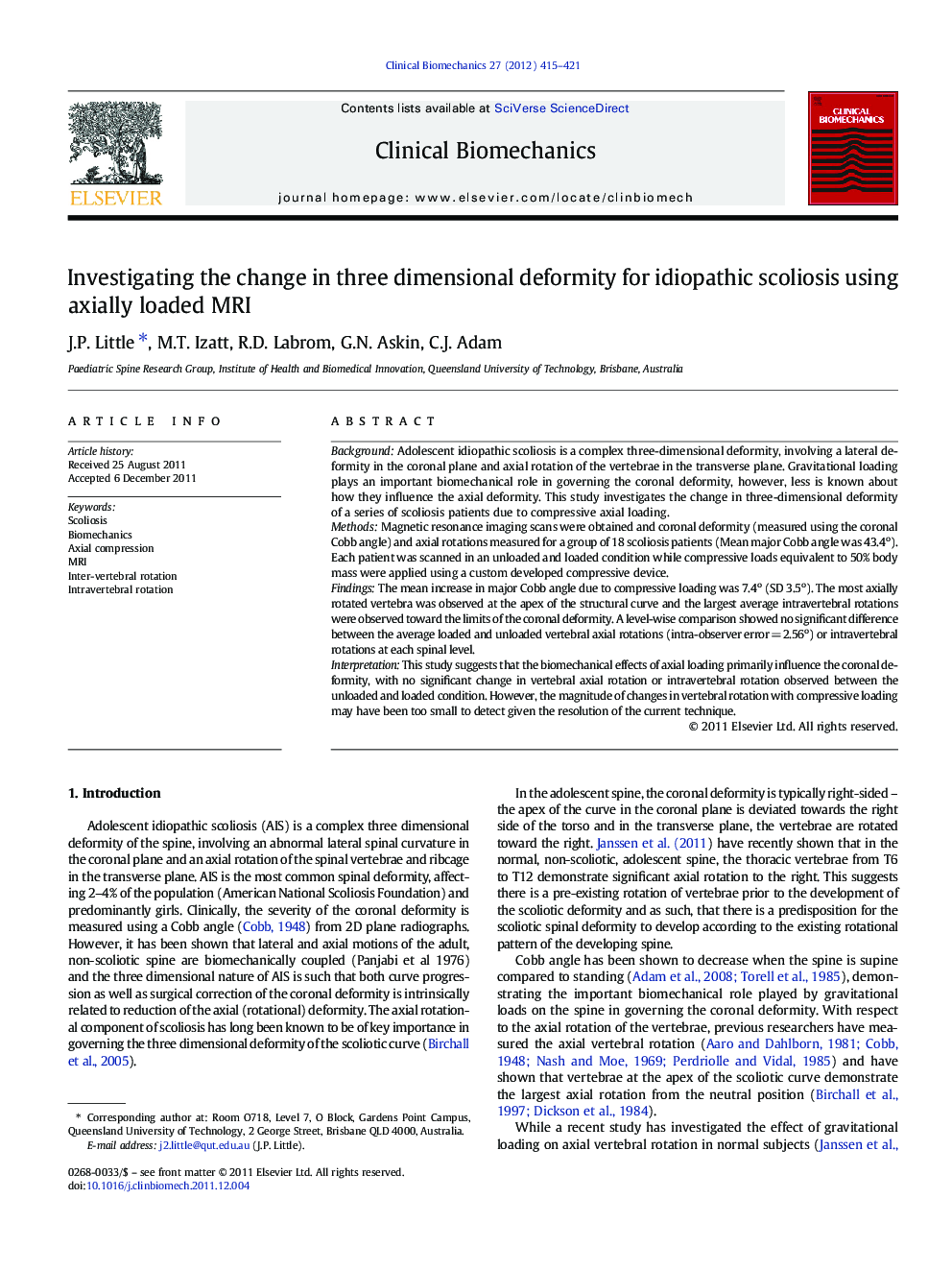| Article ID | Journal | Published Year | Pages | File Type |
|---|---|---|---|---|
| 4050510 | Clinical Biomechanics | 2012 | 7 Pages |
BackgroundAdolescent idiopathic scoliosis is a complex three-dimensional deformity, involving a lateral deformity in the coronal plane and axial rotation of the vertebrae in the transverse plane. Gravitational loading plays an important biomechanical role in governing the coronal deformity, however, less is known about how they influence the axial deformity. This study investigates the change in three-dimensional deformity of a series of scoliosis patients due to compressive axial loading.MethodsMagnetic resonance imaging scans were obtained and coronal deformity (measured using the coronal Cobb angle) and axial rotations measured for a group of 18 scoliosis patients (Mean major Cobb angle was 43.4o). Each patient was scanned in an unloaded and loaded condition while compressive loads equivalent to 50% body mass were applied using a custom developed compressive device.FindingsThe mean increase in major Cobb angle due to compressive loading was 7.4o (SD 3.5o). The most axially rotated vertebra was observed at the apex of the structural curve and the largest average intravertebral rotations were observed toward the limits of the coronal deformity. A level-wise comparison showed no significant difference between the average loaded and unloaded vertebral axial rotations (intra-observer error = 2.56o) or intravertebral rotations at each spinal level.InterpretationThis study suggests that the biomechanical effects of axial loading primarily influence the coronal deformity, with no significant change in vertebral axial rotation or intravertebral rotation observed between the unloaded and loaded condition. However, the magnitude of changes in vertebral rotation with compressive loading may have been too small to detect given the resolution of the current technique.
